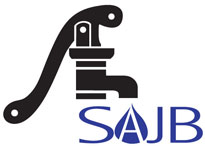Waste » Business » Mercury » Light Bulb, High Intensity Discharge (HID) Lamp
High-intensity discharge lamps (HID) include mercury vapor, metal halide, and sodium lamps. They are used where high levels of light are needed over large areas. Because of their mercury content, they typically classify as hazardous waste. Businesses may not be aware they could be illegally disposing of a hazardous waste and subject to penalties. However, they can choose to manage these lamps as Universal Waste. This allows for easier management of this waste, but Universal Waste Rules must be followed. To learn more, consult The Department of Ecology's "Universal Waste Rule for Lamps."
Universal Waste Rule for Lamps is an Ecology Fact Sheet that describes this waste in detail, including handling requirements. Below are some basic guidelines for managing lamps as universal waste:
Contain lamps in structurally sound containers such as cardboard boxes or fiber drums. In addition, keep containers closed when not adding lamps.
Clearly label or mark individual lamps or containers with the following:
- One of the following:The accumulation start date. (Both used and unused lamps become waste on the date the handler decides to discard them.)
- "Universal Waste – Lamps"
- "Waste Lamps"
- "Used Lamps"
- Identification of the contents.
You can only accumulate lamps for one year from the date they are generated. To document this, the collection container or individual UW lamp is typically marked with the first date of accumulation. An extension to the one year accumulation limit is allowed if the facility needs more time to collect enough items to facilitate proper recovery, treatment, or disposal.
Immediately clean up any broken lamps and store debris in a closed container.
Ecology's "Universal Waste Rule for Lamps"
Ecology's "Manage Universal Waste"










